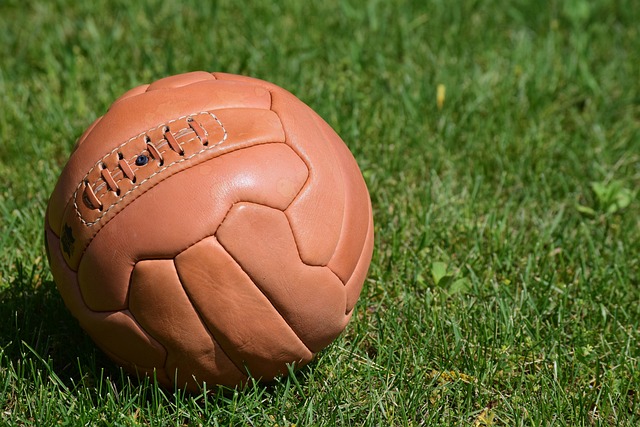Handball is a fast-paced and dynamic sport that requires precision, skill, and teamwork. At the heart of this exhilarating game is the handball ball, a vital component that undergoes rigorous testing and certification to ensure its quality and fair play. In this article, we will delve into the science behind handball ball testing, exploring the various parameters and standards that govern the manufacturing and certification processes.
From weight and size accuracy to rebound elasticity and grip testing, each aspect plays a crucial role in determining the performance and integrity of the ball. Join us as we unravel the secrets behind the meticulous testing methods and advancements in technology that make handball balls reliable and consistent.
How are handball balls tested for weight and size accuracy?
Weight and size accuracy are fundamental aspects of handball ball testing. To ensure compliance with regulations, handball balls undergo precise weighing using specialized equipment. The standard weight for a handball ball ranges from 425 to 475 grams, with variations depending on the specific age category or gender.
Similarly, size measurements are conducted using calibrated gauges to ascertain the ball’s circumference, ensuring it falls within the prescribed dimensions. These meticulous tests guarantee that handball balls meet the required standards and offer consistent performance on the court.
What is the purpose of handball ball circumference measurement?

Circumference measurement is a critical parameter in handball ball testing as it directly affects the ball’s grip, control, and handling. The standard circumference for a handball ball ranges between 58 and 60 centimeters, accommodating the diverse hand sizes of players.
By meticulously measuring the ball’s circumference, manufacturers and certifying bodies ensure that it falls within the permissible range, providing players with a comfortable grip and optimal maneuverability during gameplay.
Why is rebound elasticity important in handball ball testing?
Rebound elasticity is a key characteristic that determines the ball’s ability to bounce off different surfaces. Handball balls are subjected to controlled impacts and measured for their rebound performance. The rebound elasticity directly affects the speed, accuracy, and trajectory of the ball, contributing to the overall dynamics of the game.
By testing and certifying the rebound elasticity, handball ball manufacturers ensure that the balls maintain consistent and predictable bounce properties, allowing players to anticipate and react effectively during matches.
What are the standards for handball ball grip testing?
Grip testing plays a vital role in evaluating the surface texture and adherence of the handball ball. The ball’s outer cover undergoes rigorous examination to ensure it offers an optimal grip for players, facilitating precise passing, catching, and shooting.
Specialized grip testing machines simulate the contact between the ball and players’ hands, assessing the friction and grip characteristics. The standards for grip testing ensure that handball balls offer sufficient traction without being excessively sticky, allowing for a comfortable yet controlled grip during intense gameplay.
How do handball ball manufacturers test for shape retention?
Shape retention is a crucial aspect of handball ball testing, as the ball should maintain its roundness and integrity even after prolonged use. Manufacturers subject the handball balls to repeated impacts, compressions, and deformations to assess their ability to retain their original shape.
Through advanced testing methods, such as repeated drops from specific heights, handball ball manufacturers ensure that the balls exhibit excellent shape retention, providing players with consistent and predictable ball behavior throughout the game.

What are the requirements for handball ball air pressure testing?
Air pressure testing is a critical step in handball ball certification, as it determines the optimal inflation level for consistent performance. Handball balls are inflated to a specific pressure defined by regulations, typically ranging from 0.6 to 1.1 atmospheres.
Testing equipment measures and verifies the air pressure, ensuring that it falls within the prescribed range. By adhering to these requirements, handball balls offer players the desired feel, control, and flight characteristics, promoting fair play and a level playing field.
How is handball ball water absorption evaluated during testing?
Water absorption testing assesses the ability of handball balls to repel water and maintain their performance in wet conditions. Handball balls are submerged in water for a predetermined period, after which their weight and buoyancy are measured.
Minimal water absorption ensures that the ball does not become heavier or lose its properties when exposed to moisture. By undergoing stringent water absorption tests, handball balls are certified to provide consistent gameplay, irrespective of weather conditions.
What impact resistance tests are conducted on handball balls?
Handball balls are subjected to impact resistance tests to evaluate their durability and resistance to damage during gameplay. These tests simulate the intense physical demands of handball, where balls experience high-velocity impacts with the court, walls, and other players. By withstanding rigorous impact tests, handball balls demonstrate their ability to maintain structural integrity, preventing deformation, cracking, or splitting that could compromise their performance and longevity.
How do handball balls undergo durability testing?
Durability testing assesses the long-term performance and resistance of handball balls to wear and tear. The balls are subjected to repetitive impacts, abrasion tests, and exposure to various environmental conditions.
Through these assessments, handball ball manufacturers ensure that their products can withstand the demands of intense gameplay and retain their performance characteristics over extended periods. Durability testing guarantees that handball balls offer longevity and consistent quality, minimizing the need for frequent replacements.
What criteria are used for handball ball flight stability assessment?
Flight stability is a critical factor in handball ball testing, as it directly impacts the accuracy of passes and shots. Handball balls undergo specific tests to evaluate their flight characteristics, including trajectory, speed, and aerodynamic stability.
These assessments ensure that the balls maintain predictable and stable flight paths, enabling players to deliver accurate passes and shots with confidence. By adhering to flight stability criteria, handball balls contribute to the fair and competitive nature of the game.
Why are handball balls subjected to temperature and humidity tests?

Handball balls are subjected to temperature and humidity tests to assess their performance under different environmental conditions. Extreme temperatures and high humidity levels can affect the ball’s materials, structure, and properties, which in turn can influence its bounce, grip, and overall playability.
By subjecting the handball balls to varying temperature and humidity conditions, manufacturers can ensure that the balls maintain their desired characteristics and perform consistently across different playing environments. These tests help in determining the ball’s suitability for use in both indoor and outdoor settings, ensuring that players can rely on the ball’s performance regardless of the weather conditions they are playing in.
What role do compression tests play in handball ball certification?
| Test | Purpose | Measurement |
|---|---|---|
| Temperature and Humidity | Assess ball performance under different environmental conditions | Ball’s response to temperature and humidity variations |
| Compression Test | Evaluate ball’s elasticity and resilience | Deformation under specific compression force |
| Bounce Consistency | Ensure consistent bounce characteristics across balls | Rebound height and consistency measurements |
| Seam Durability | Assess the strength and wear resistance of ball seams | Tension and abrasion tests on seams |
| Roundness Evaluation | Determine the roundness of the handball ball | Measurements using roll test and laser scanning |
Compression tests play a crucial role in the certification process of handball balls. These tests measure the ball’s ability to withstand pressure and deformations. The ball is typically subjected to a specific compression force, and the resulting deformation is measured. This test assesses the ball’s elasticity and resilience, which are essential for its performance during gameplay.
Handball balls need to maintain their shape and bounce characteristics even after repeated impacts and compression. By conducting compression tests, manufacturers can ensure that the balls meet the required standards for play and provide consistent performance throughout their lifespan.
How do handball ball manufacturers ensure consistent bounce characteristics?
Handball ball manufacturers employ various techniques to ensure consistent bounce characteristics across their products. They carefully select materials with specific properties that contribute to the desired bounce of the ball. Additionally, manufacturers conduct rigorous testing to measure the ball’s rebound height and consistency.
By using standardized testing equipment and protocols, they can assess the ball’s bounce behavior under controlled conditions. This helps in identifying any variations in bounce across different production batches and ensures that the balls meet the required standards. Manufacturers also implement quality control measures throughout the production process to maintain consistent bounce characteristics, allowing players to rely on the ball’s predictable behavior during matches.
What tests are performed to assess the durability of handball ball seams?
To assess the durability of handball ball seams, manufacturers conduct various tests that simulate the stresses and forces experienced during gameplay. These tests include tension tests, where the seams are subjected to pulling forces to evaluate their strength and resistance to tearing. Additionally, abrasion tests are performed to assess the seam’s resistance to wear and damage caused by friction against the playing surface or other objects.
By subjecting the seams to these tests, manufacturers can ensure that they withstand the demands of intense handball play and maintain their integrity throughout the ball’s lifespan. Robust and durable seams are crucial to preventing seam failures and prolonging the overall durability of the handball ball.
How is the roundness of a handball ball evaluated during testing?
The roundness of a handball ball is evaluated through a series of measurements and tests. One of the commonly used methods is the roll test, where the ball is placed on a flat surface and rolled to assess its deviation from a perfect circle. Measurements are taken at multiple points along the ball’s circumference to determine its roundness.
Additionally, advanced measuring techniques such as laser scanning are employed to capture precise measurements and detect any deviations or irregularities in the ball’s shape. Manufacturers set specific tolerances for roundness, ensuring that the balls meet the required standards for play. Evaluating the roundness of handball balls during testing helps guarantee fair and consistent gameplay, as round balls roll predictably and behave as intended during matches.
In Conclusion
Handball ball testing and certification are essential processes that guarantee the quality, performance, and fairness of the game. By meticulously evaluating weight and size accuracy, rebound elasticity, grip, shape retention, air pressure, water absorption, impact resistance, durability, flight stability, and more, handball ball manufacturers ensure that players can rely on consistent and reliable equipment.
The science behind handball ball testing continually evolves, incorporating advancements in technology and materials to push the boundaries of performance. Through strict adherence to testing standards and certifications, handball balls uphold the integrity of the sport, allowing players to showcase their skills and enjoy the exhilaration of handball.